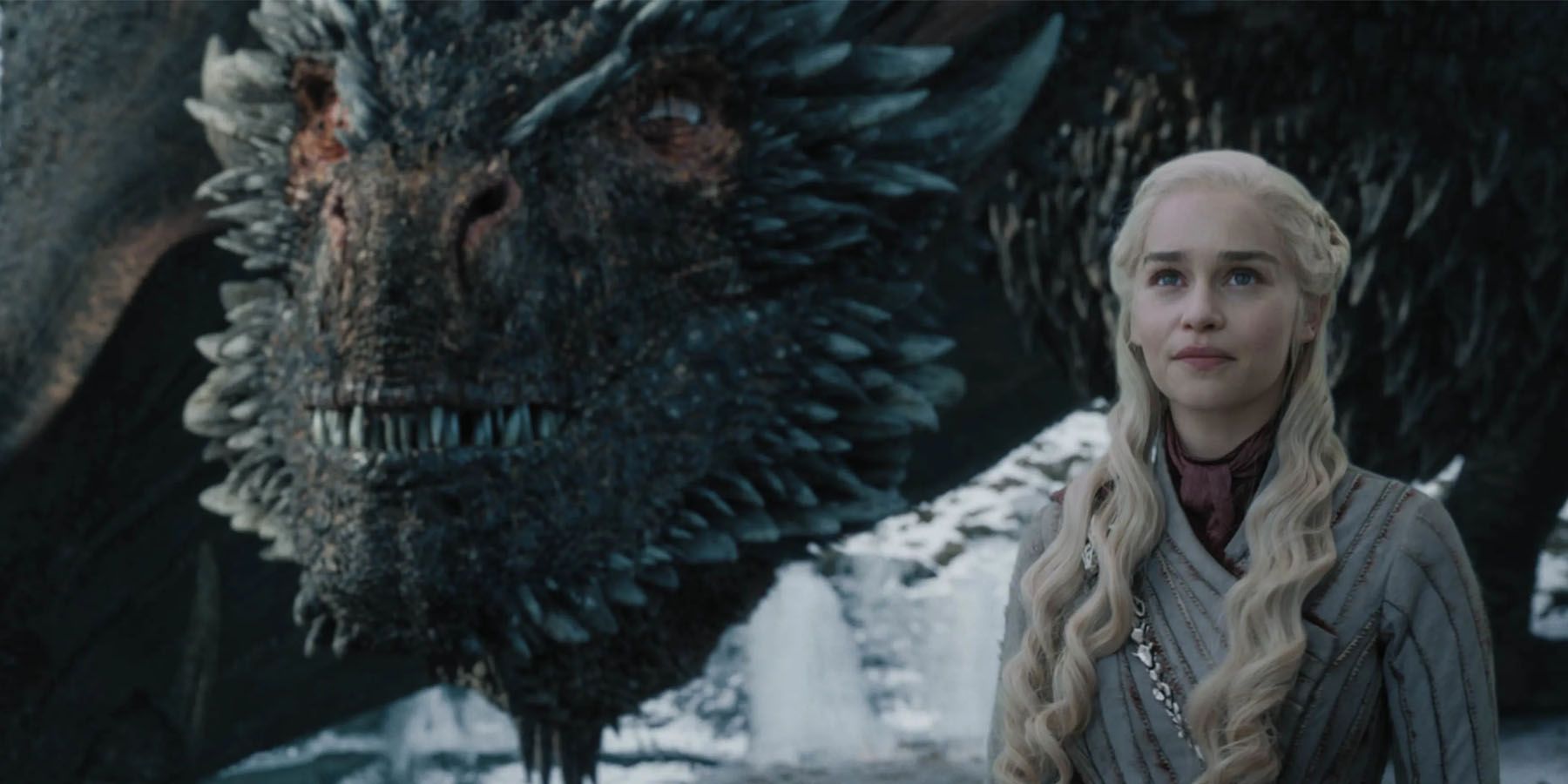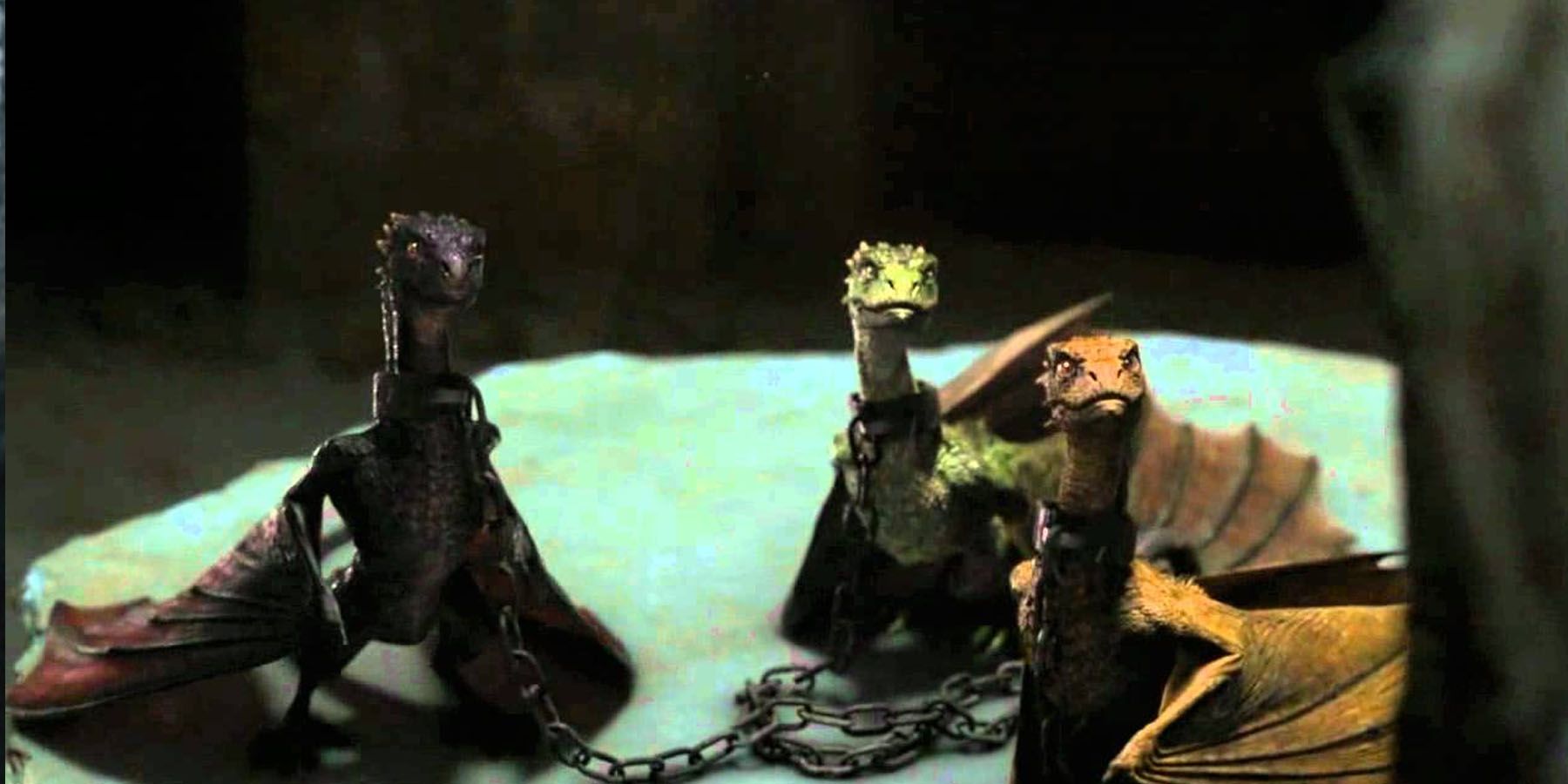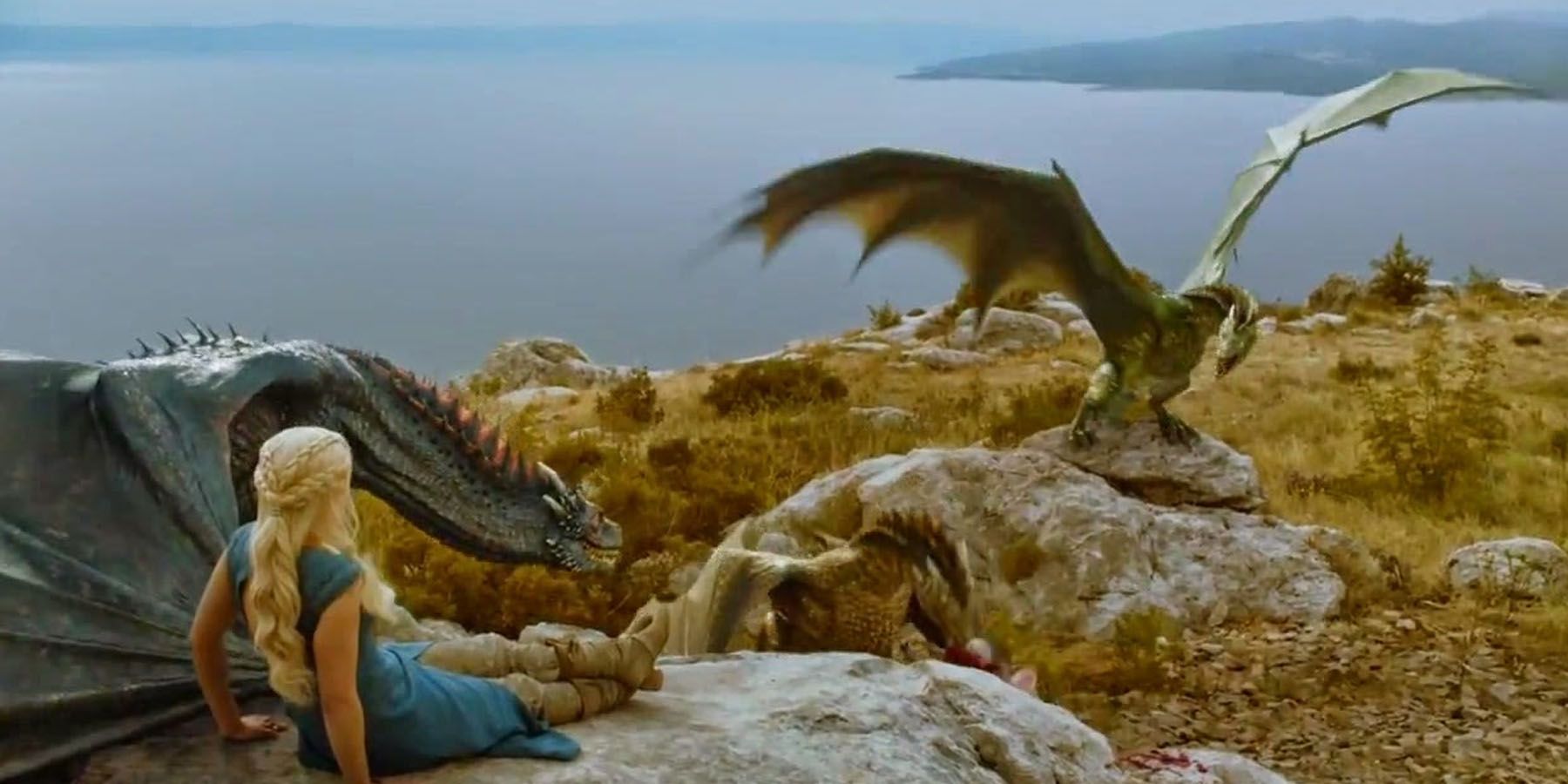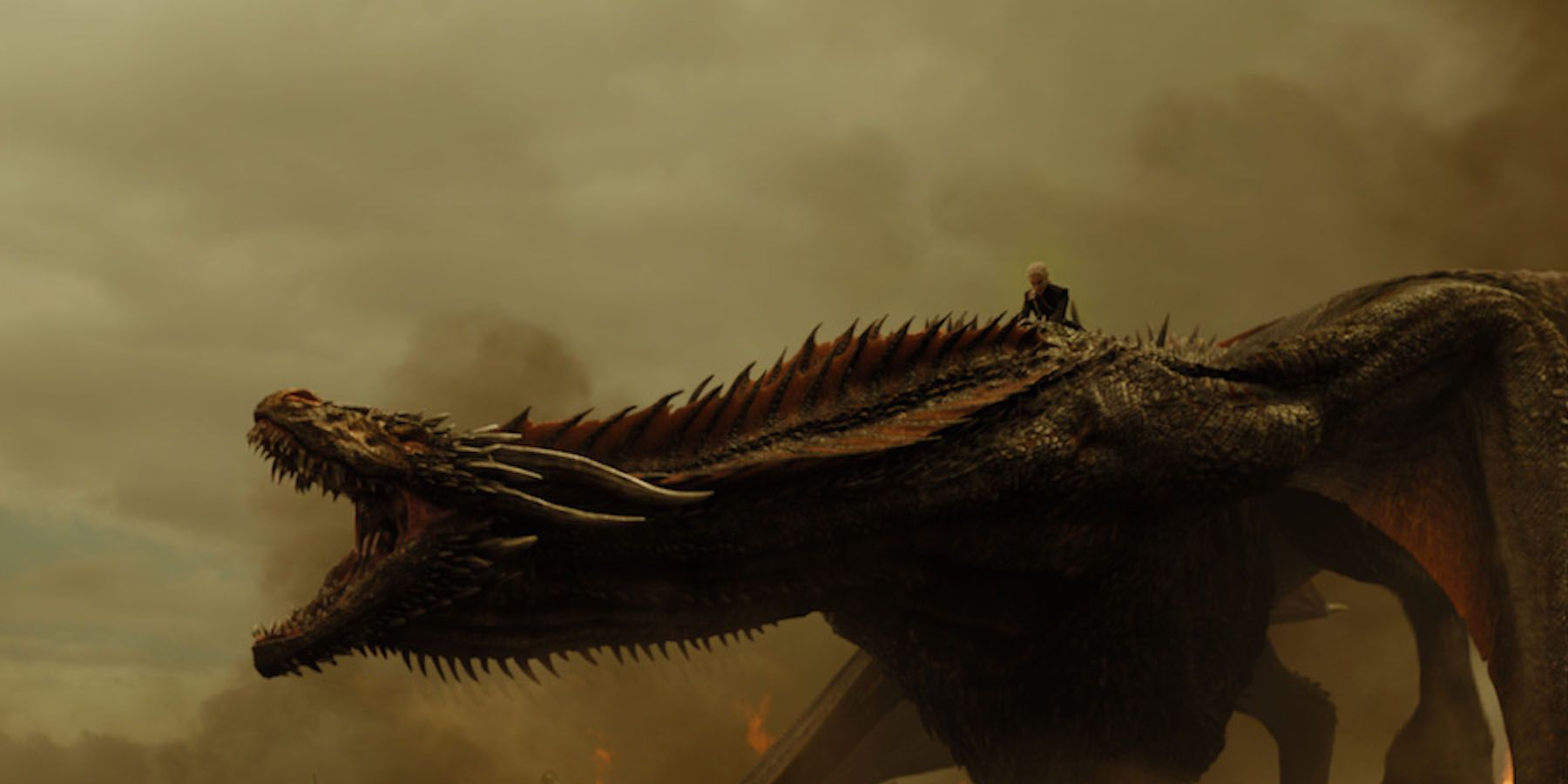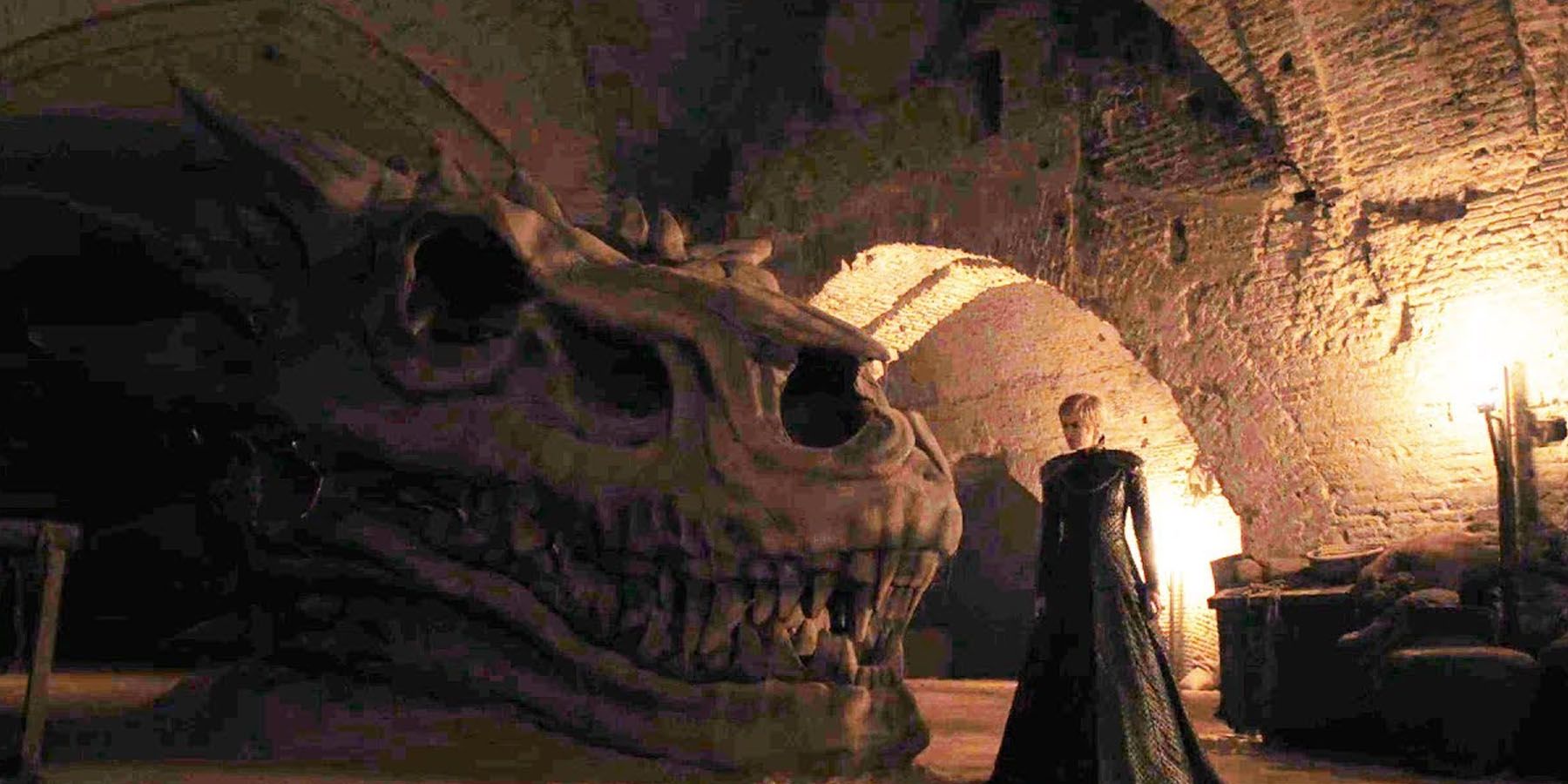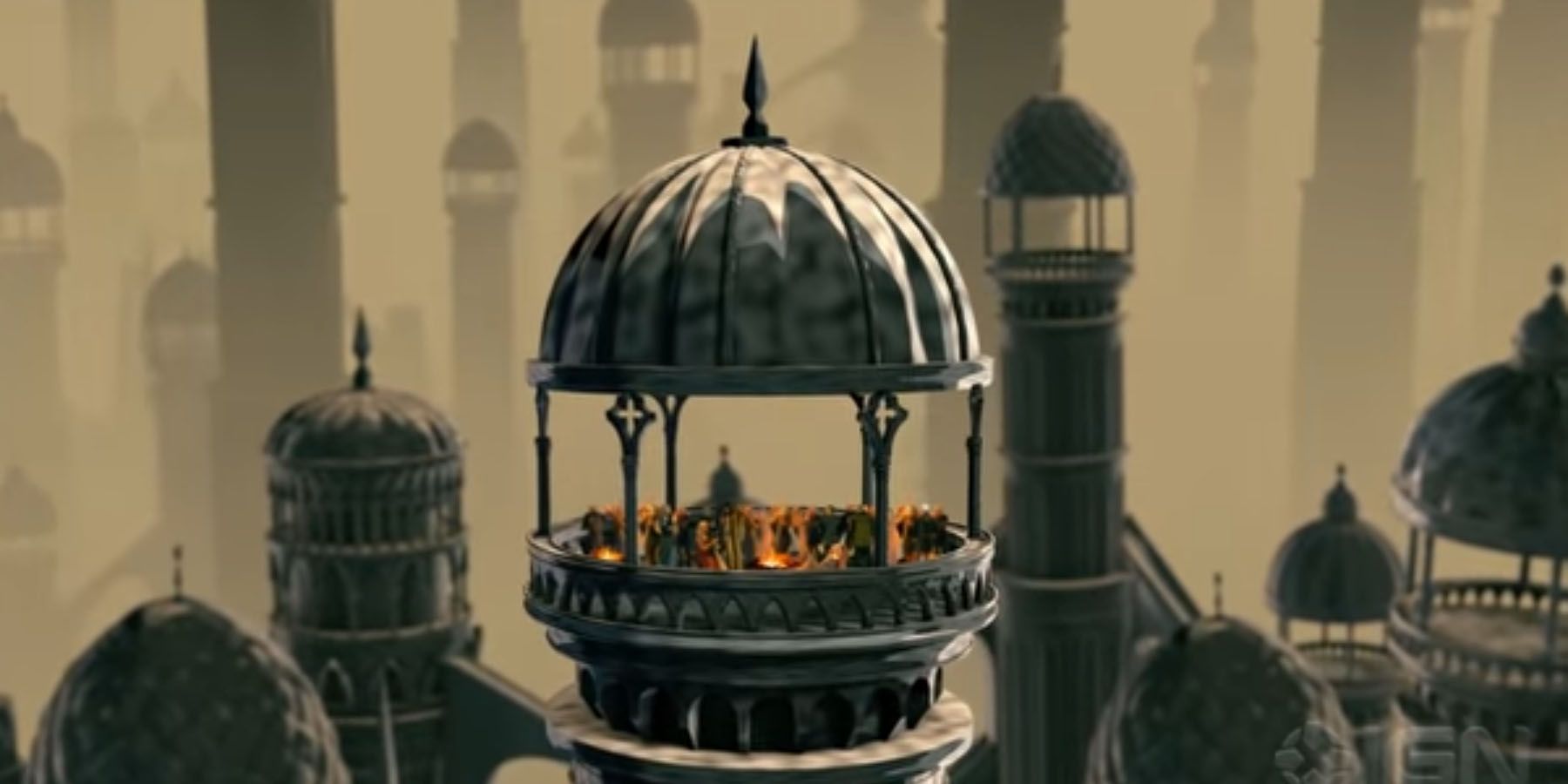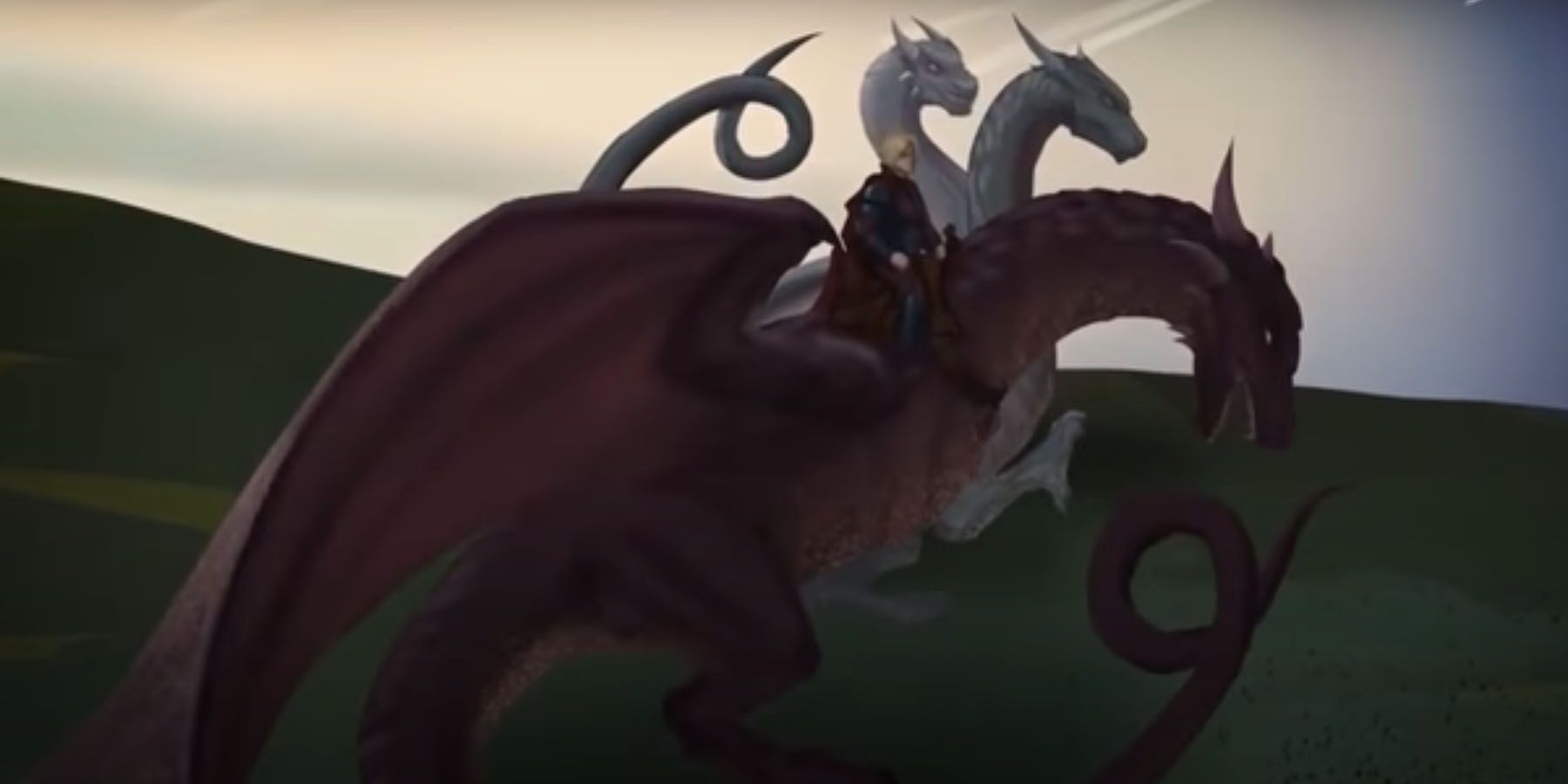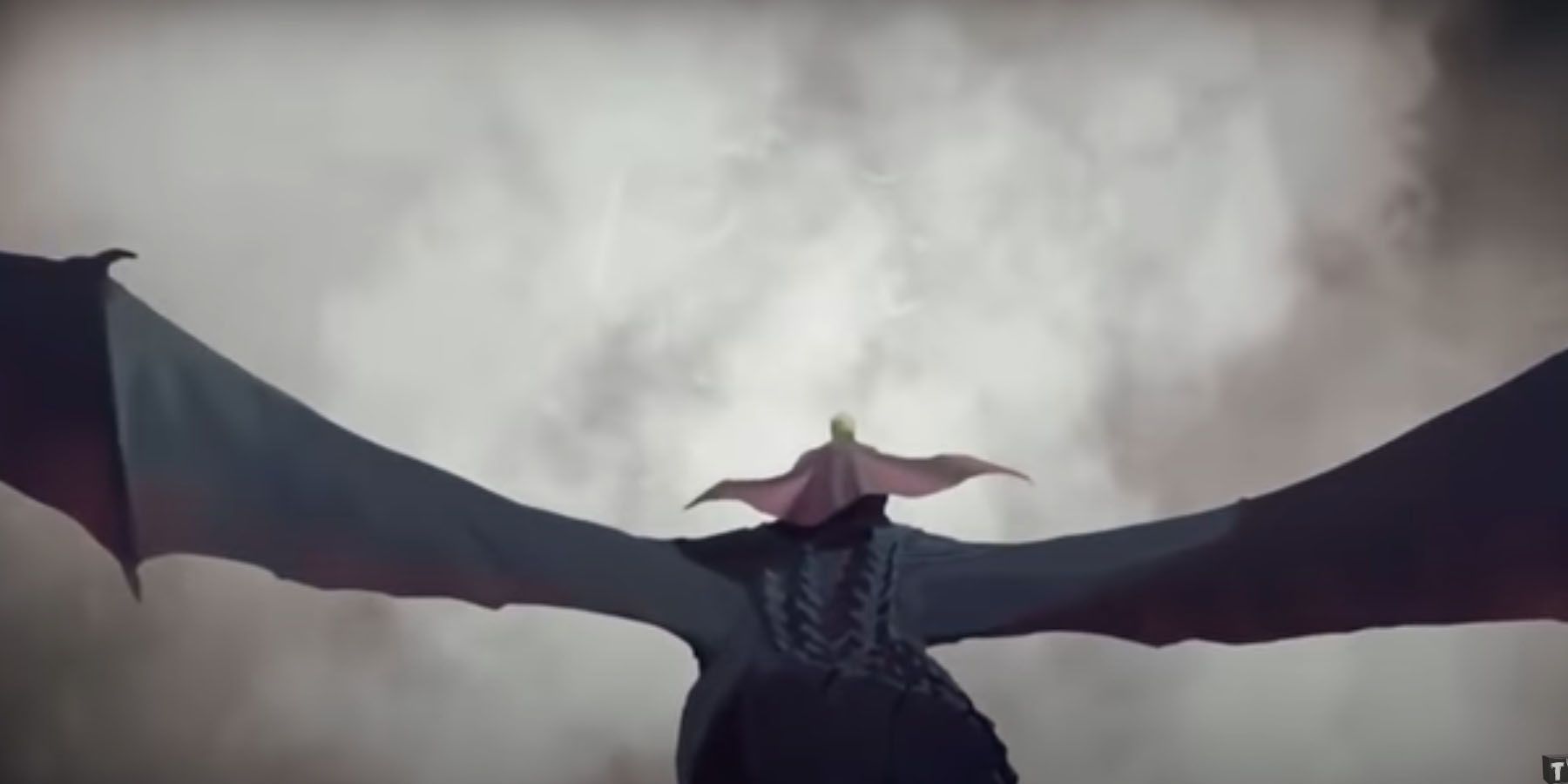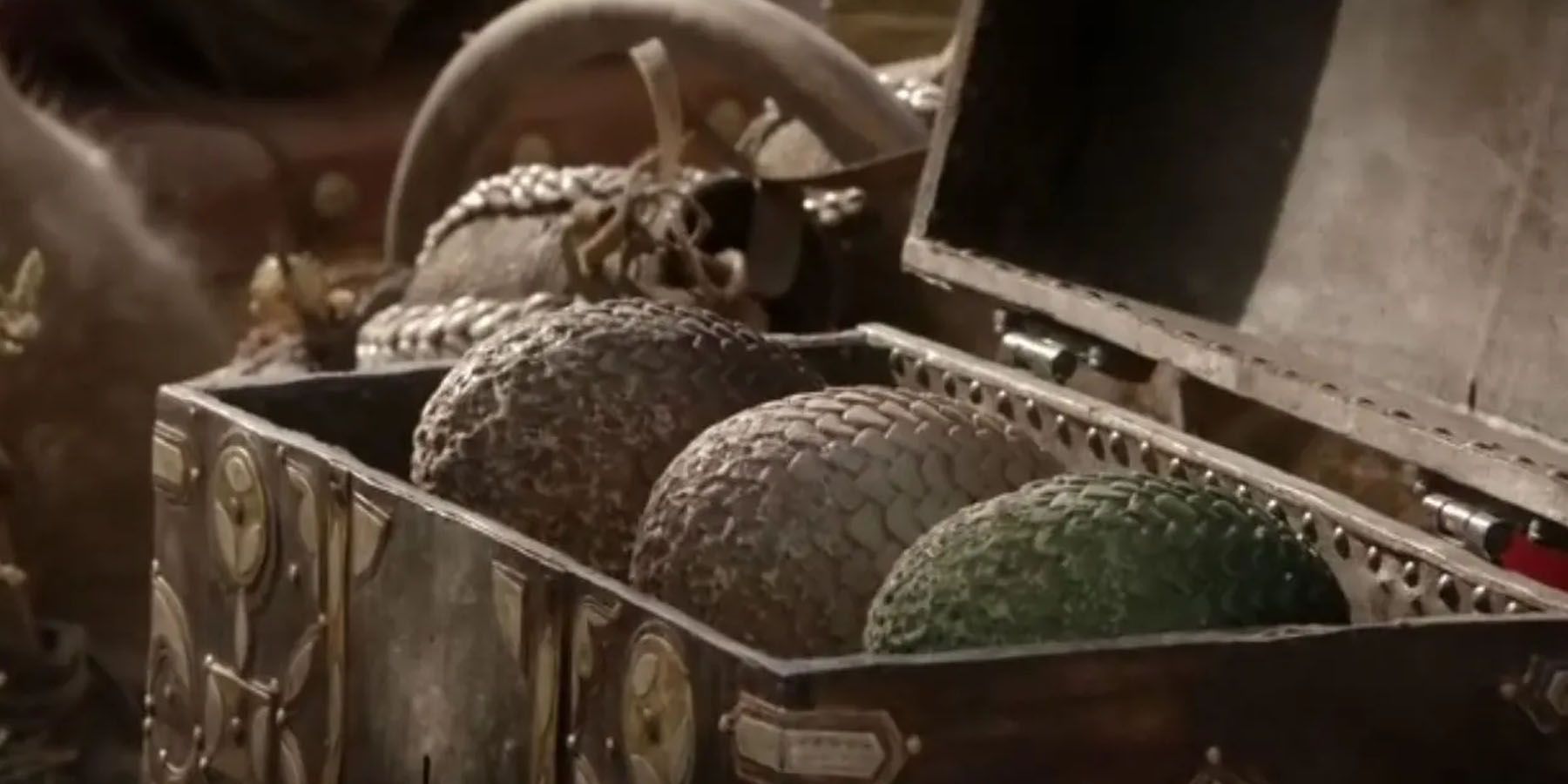Despite the Game of Thrones series being its own brand of realistic high fantasy, the inclusion of both dragons and the obscurities of faith and magic add a blend of fantastical mystery to the hit series. Dragons in particular hold an important piece of the history of the entire series, with Game of Thrones officially beginning a few generations after the last dragons have been apparently killed.
Of course, as viewers would see, Daenerys Targaryen would resurface as a contender to the Iron Throne with a trio of newborn dragons. However, aside from their vicious nature in the series, the books hide a lot more surprises in store regarding their mythology.
10 Dragons Have Mysterious Origins
Just as they are creatures of myth in the real world, even dragons in Westeros seem to have origins so ancient that one could only rely on legends to have a glimpse of how the winged beasts came to the Seven Kingdoms. And even then, the origins of dragons varied from place to place. Accounts included:
- According to Valyrians, dragons came from the volcanoes of the Fourteen Flames in the Valyrian peninsula.
- According to people from Qarth, dragons came from a “second moon” that was “scalded and cracked” by the sun.
- Other stories also said that the dragons have come from the far east, beyond both Asshai and the Shadow Lands.
9 Dragons May Have Mystic, Scientific Beginnings
Aside from myths and legends, the origins of dragons are also associated with both mystical and scientific beginnings. For instance, Septon Barth had a theory that Valyrians actually used blood magic on wyverns in order to create dragons.
From a scientific point of view, it’s also quite possible for dragons to be considered distant relatives of both the wyvern and the firewyrms. Both originating from beyond Westeros, wyverns are winged beasts prominent in Sothoryos and are vicious predators. Meanwhile, firewyrms are fire-breathing reptiles native to the Fourteen Flames of Essos.
8 Dragons Have Remarkable Biologies
While dragons resemble large, winged fire-breathing lizards, there’s much more that goes on in their body than meets the eye. Perhaps the most obvious feature of dragons is their large scales that thicken and harden over time, making them almost impervious to both damage and flames as they grow older. In speaking of flames, the notorious dragonfire also grows in strength as they age, capable of melting both steel and bone when trained enough.
Even their remains seem extremely potent, as dragonbone not only has high iron content but rather special properties. Dragonbone may have the same strength as steel, but boasts more flexibility, lightness, and even immunity to flames. Their reproduction also became a topic of contention, as others believe dragons to have genders, not have genders, or even “switch” genders at will.
7 Dragons Are Not Easy To Tame And Control
Being capricious by nature, dragons have to be trained to ensure they don’t harm both their riders and the people around them. And while anyone can become a dragonrider, they must first bond with the dragon - and this bond stays for life, and only through death can a dragon or a dragonrider choose another, respectively. Such is the strength of their bond that dragons will refuse to ride another person unless their dragonrider is already with them.
What’s perhaps more interesting is how dragons seem to have been attached specifically to the bloodline of House Targaryen, or to Valyrian heritage. In history, the Valyrian Freehold wanted to keep the bloodline pure, which facilitated a tradition of incest. It’s generally believed that it’s this “strength” in the surviving Valyrian’s Targaryen bloodline that ensured dragons remained bonded to them. However, there are no guarantees as to the connection of the Targaryen bloodline to dragonriding potential.
6 Dragons Have Cultural Importance In Westeros
Despite their extinction by the time of the current Westeros, the influence of dragons remained throughout the Seven Kingdoms. For instance, one of the most valuable coins in the Iron Throne is called a golden dragon, perhaps associated with the regality of the Targaryens that ruled the Iron Throne for centuries. This may also have been attached to the fact that Targaryens rode and paraded their dragons both as transport and as proof of their power.
By the time dragons became extinct, the walls of the Red Keep became home to 19 dragon skulls, some of which were said to be thousands of years of age. Meanwhile, dragon eggs that were left to “rot” simply petrified and became extremely expensive ornaments. They were frequently traded by merchants from Essos as rare commodities.
5 Dragons Helped Create The Valyrian Freehold
It’s said that the Valyrians took power and dominated Essos courtesy of their control over dragons. When dragons migrated from further east, Valyrians were said to have mastered the art of not just raising but taming dragons. It’s through their capacity to tame the winged beasts that Valyrians were able to train dragonriders, which then helped Valyria dominate the Old Empire of Ghis and win the Rhoynish Wars. In their victory, their dominion over Essos came through the unity of various Valyrian noble houses - the Valyrian Freehold.
Interestingly, “how” the Valyrians managed to tame dragons remains contested. It’s said that an unnamed group of people came to Valyria with dragons and taught Valyrians the mystic arts of taming them. Likewise, it’s said that Valyrians created and used the sorcerous dragon horns in order to tame dragons. One such dragon horn in Euron Greyjoy’s possession, which the Red Priest Moqorro calls Dragonbinder, is instrumental in his current conquest of Westeros in the books.
4 Freehold’s Fall, Rise Of Fire And Blood
When the Valyrian Freehold fell during the cataclysmic Doom of Valyria, their hundreds-strong dragon race was reduced to almost nothing. It’s thanks to the prophecy of Daenys the Dreamer, daughter of Lord Aenar Targaryen, that minor family House Targaryen escaped Valyria and settled on Dragonstone a decade before the Doom and saved themselves from the ensuing catastrophe.
Whereas the Century of Blood plunged the torn Essos into chaos, House Targaryen thrived with five dragons in their new home. While four of these hatchlings eventually died, the largest Balerion remained. Thankfully, the other dragons left some eggs behind and sprang forth Vhagar and Meraxes. The three dragons became some of the most notable dragons in Westeros. It’s through the power of their dragons that House Targaryen began their domination of Westeros.
3 Aegon’s Conquest Of The Seven Kingdoms
As with Valyrians during the creation of the Valyrian Freehold in Essos, dragons became extremely instrumental in the Targaryen’s Wars of Conquest - known in history as Aegon’s Conquest - that eventually dominated the Seven Kingdoms. They were major participants in numerous battles that shaped Westeros in its current state, such as the burning of the mighty Harrenhall and the catastrophic Field of Fire or even the First Dornish War. It’s through dragons - be it through the threat of them, or actual fights against them - that noble houses in Westeros eventually bent the knee to Aegon the Conqueror.
Throughout the Targaryen rule of around 150 years, the number of dragons that existed under their domain was around 20. Most of them were used in the tragic Targaryen civil war known as the Dance of the Dragons, which again dwindled the number of living dragons down to four.
2 Once Driven To Extinction, Futile Attempts At Resurrection
As fans of the Game Of Thrones series know, dragons were extinct by the time the show started. This all began around the time the Dance ended when the four remaining dragons began dying one by one through various means. The last remaining dragon was a stunted green dragon with withered wings. While she laid five eggs, none of them ever hatched. When the last dragon died, her death marked the true extinction of dragons in Westeros.
Perhaps more horrifying were the many attempts to try and “resurrect” mighty dragons. Aegon III Targaryen, known as Dragonbane as dragons became extinct under his rule, had nine mages from the east use their magic to hatch remaining dragon eggs but to no avail. Meanwhile, Aegon V Targaryen caused the tragedy of Summerhall by conducting a fire ritual to hatch dragon eggs, which simply resulted in the burning of the fortress.
1 The Maester Conspiracy
Magic was something commonly associated with dragons - it’s said that, in their deaths, summers became shorter while winters became longer and much colder. It’s also said that the death of dragons marked the death of magic. And if Archmaester Marwyn is to be believed, the fall of dragons may have been the plans of the maesters after all.
The maesters of the Citadel, perhaps the Westerosi equivalent of today’s scientists, were not one to believe in sorcery and magic. Archmaester Marwyn of the Night’s Watch surmised it’s the maesters’ doing that resulted in the Targaryen civil war, and may even have had a hand in killing the last remaining dragons. In the books, Marwyn even wondered why the maesters of the Citadel allowed Maester Aemon, born Aemon Targaryen, to stay the Night Watch’s maester when, by virtue of his training, he could’ve been Archmaester. According to Marwyn, it may have been Aemon’s blood that still made the old maester a threat to the Citadel.




